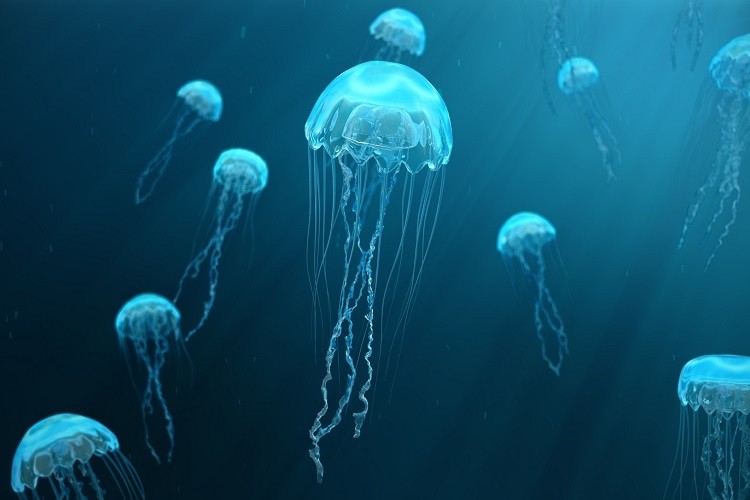Despite lacking a central brain, jellyfish exhibit learning capabilities akin to humans, mice, and flies, as reported by scientists on September 22 in the journal Current Biology. In a groundbreaking study, researchers trained Caribbean box jellyfish (Tripedalia cystophora) to detect and maneuver around obstacles, challenging the conventional belief that sophisticated learning demands a centralized brain. This discovery sheds light on the evolutionary origins of learning and memory.
Measuring no larger than a fingernail, these seemingly uncomplicated creatures possess a sophisticated visual system housing 24 eyes within their bell-shaped bodies. Thriving in mangrove swamps, they rely on vision to navigate through murky waters, deftly maneuvering around submerged tree roots to capture prey. Scientists demonstrated the jellyfish’s ability to learn avoidance behaviors through associative learning, forming mental connections between sensory stimuli and actions.
Jan Bielecki of Kiel University, Germany, the study’s first author, remarks, “Learning stands as the pinnacle achievement for nervous systems.” He emphasizes the importance of leveraging the jellyfish’s innate behaviors to impart new skills, enabling them to realize their full learning potential.
To simulate the jellyfish’s natural habitat, the team adorned a round tank with gray and white stripes, mimicking the mangrove roots. Over 7.5 minutes of observation, initially, the jellyfish closely approached the seemingly distant gray stripes, frequently colliding with them. However, by the study’s end, the jellyfish significantly increased its distance from the walls by approximately 50%, quadrupled successful maneuvers to avoid collisions, and halved its contact with the walls. These findings indicate that jellyfish can learn from experiences involving both visual and mechanical stimuli.
Anders Garm from the University of Copenhagen, Denmark, the senior author, suggests, “When deciphering complex structures, beginning with simplicity is key.” He emphasizes the significance of studying these relatively uncomplicated nervous systems in jellyfish, providing insights into the intricate workings that drive their behaviors.
The researchers delved deeper to uncover the process behind jellyfish associative learning, focusing on their visual sensory centers, the rhopalia. These structures, housing six eyes each, emit signals regulating the jellyfish’s pulsating movements. The frequency of these pulses intensifies when the jellyfish navigates around obstacles.
By presenting moving gray bars to mimic the approach of objects, the team observed the rhopalium’s response. Initially unresponsive to light gray bars, interpreting them as distant, the rhopalium changed its signals after being trained with mild electric stimulation upon the bars’ approach. This stimulation mimicked the mechanical feedback from collisions, highlighting the necessity of combining visual and mechanical stimuli for associative learning. The rhopalium emerged as a vital learning center in jellyfish.
The researchers aim to delve further into the cellular interactions within jellyfish nervous systems to unravel the mechanisms of memory formation. Additionally, they seek to comprehend the functionality of the bell’s mechanical sensor to gain a comprehensive understanding of jellyfish associative learning.
Garm expresses surprise at the rapid learning exhibited by these creatures, likening it to the pace of learning seen in more advanced animals. He concludes, “Even within the simplest nervous systems, advanced learning seems plausible, suggesting an immensely fundamental cellular mechanism present at the dawn of nervous system evolution.
